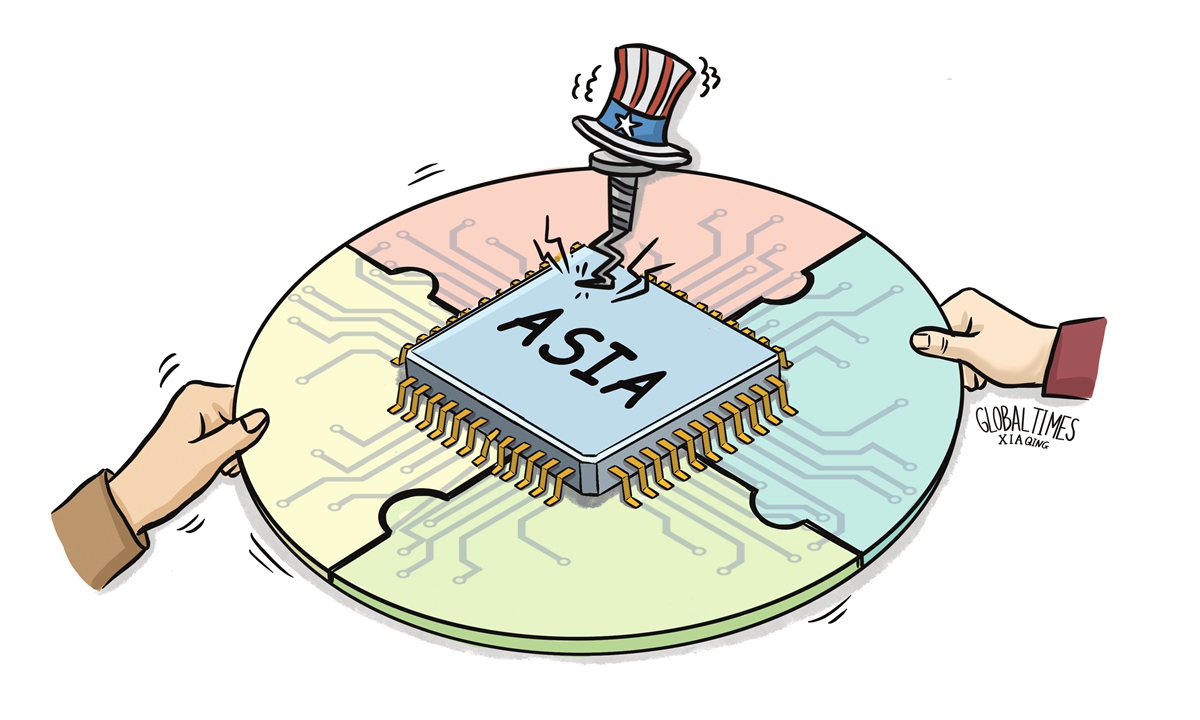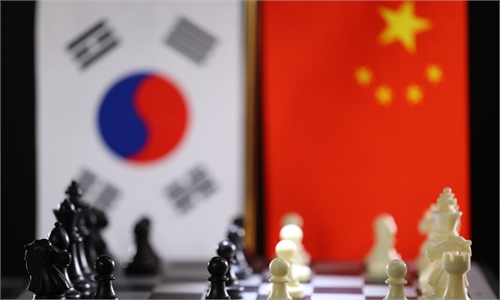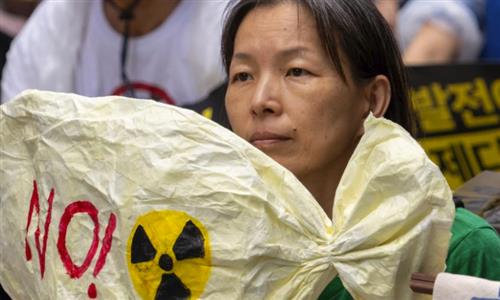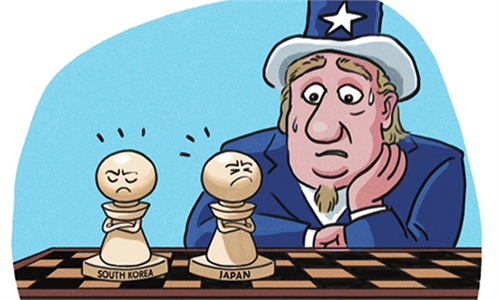
Illustration: Xia Qing/Global Times
A disturbing development in East Asia is that the region has emerged as one of the heartlands of the "new cold war," which has brought shocks to regional supply chains. What's worse, instead of triggering rational reflection, losses of supply chains and trade may fuel more geopolitical hostility, pushing the originally complementary economic structures into uncharted waters.South Korea's exports of information and communications technology (ICT) goods in July dropped 24.3 percent year-on-year, down for the 13th consecutive month, according to data released on Wednesday by the Ministry of Science and ICT of South Korea.
While waning demand for semiconductors may play a role, the continuous decline in South Korea's ICT exports looks more like a microcosm of the changes taking place in East Asia's industrial chains, as there are growing signs that the iron curtain of the "new cold war" has fallen in the region.
If anything, the impact on economic cooperation among China, South Korea and Japan is the most direct manifestation of this worrying development. In recent decades, the business communities in the three countries have never been more concerned about the potential impact of geopolitical risks as they are today.
Now the US is using the so-called security issue as an excuse to strengthen collusion and cooperation with Japan and South Korea. This trend will have a devastating effect on cooperation in East Asia, particularly among China, South Korea and Japan.
Take the regional semiconductor supply chain. Since the US passed the CHIPS and Science Act of 2022, the Biden administration has roped in its allies including Japan and South Korea to limit China's access to semiconductors and sensitive areas of key technologies.
It is clearly a disruption of normal economic cooperation, but regrettably, Japan and South Korea have chosen to jump onto the US chariot for their own selfish political gains.
If the situation persists - namely, if Japan and South Korea continue to align themselves with the US policy toward China in a "new cold war" - the economic structure of East Asia will soon face profound changes.
This is because the choices made by Japan and South Korea will inevitably affect cooperation among companies of the three countries, investment by Japanese and South Korean companies in China, and their development in the Chinese market.
Disrupted regional economic cooperation may only be one aspect of the consequences of the "new cold war," and others may include even more complicated security issues in the region, such as the nuclear problem on the Korean Peninsula.
Indeed, it is not long ago that China-Japan-South Korea economic and trade cooperation was progressing smoothly, and many had had high expectations for a breakthrough in their talks over the establishment of a free trade zone. With the world's center of economic gravity gradually shifting to Asia, it's widely regarded that China, Japan, South Korea and ASEAN will be the engines of future global economic growth, with their shares of global GDP on the rise.
But the "new cold war" has left the region's future in uncertainty. It is not hard to imagine what complex changes will take place if Japan and South Korea join the "new cold war" initiated by the US.
If Japan and South Korea follow the US strategy of regarding China as a major rival, their economic and trade relations with China will also be aligned with that stance. But China is unlikely to just roll over and take it, so any miscalculation in that direction will have a serious impact on the economies and trade of Japan and South Korea.
From China's point of view, changes in East Asia's industrial chains will bring pressure, but this could also be an opportunity for Chinese companies to move up the value chain.
In the face of the US push for diversified supply chains, Chinese needs to maintain its manufacturing strength while accelerating breakthroughs in key technologies. Only in this way can China gain more initiatives in future competition, stimulating the vitality of its big market while advancing its manufacturing toward the world.



